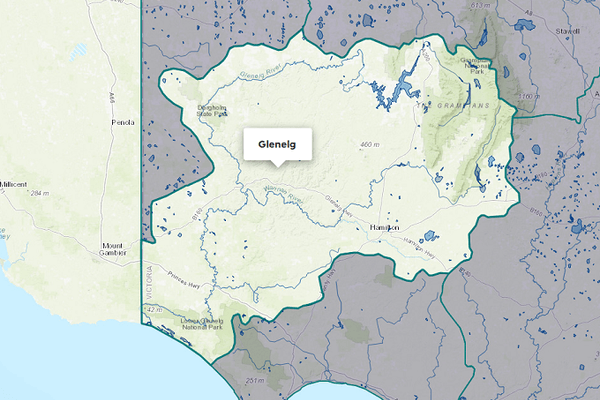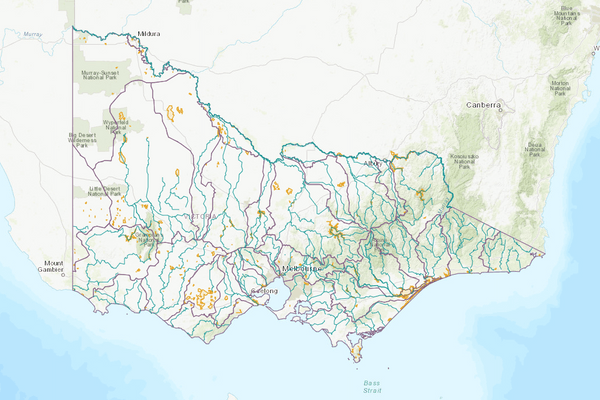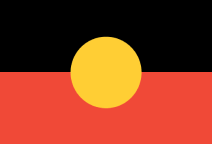About the area
The Portland Coast basin is in south-western Victoria. Major rivers in the basin include the Moyne, Eumeralla, Fitzroy and Surrey rivers.
The basin receives 600-900 mm annual rainfall on average.
Land around the basin is primarily used for grazing and broad acre cropping.
More information on water management and accounting is detailed in Water explained.
2022-23 overview
Available water
Catchment inflow was much higher than the previous year.
Licensed diversion restrictions
There were fewer restrictions on licensed diversions than the previous year.
Water use
More water was diverted for consumptive purposes than the previous year.
When compared to the previous year, in 2022-23:
- more rainfall was received and catchment inflow was much higher
- there were fewer restrictions on licensed diversions from unregulated streams
- more water was diverted from the basin for consumptive uses.
Climate
Rainfall
In 2022-23, rainfall was very much above the long-term average across most of the Portland Coast basin, and above average around Cape Bridgewater. This was higher than the previous year where rainfall was close to average across the basin.
Figure 1 displays the rainfall received in 2022-23 compared to the long-term average (1975-2023).
Figure 1: Rainfall deciles, Portland Coast basin
Sourced from the Australian Bureau of Meteorology
River basin water balance
This section describes the known and estimated inflows, outflows and change of storage volumes in the basin.
Of the total inflows, 99% flowed out into the ocean in 2022-23.
Water balance table
The table below shows the total volumes of water available and supplied from water resources in the Portland Coast basin in 2022-23.
Table 1: Water balance, Portland Coast basin
Inflows
Catchment inflow
Catchment inflow represents the volume of water flowing into the waterways of a basin. It is calculated as the total outflows and change in storage minus the known inflows.
Above average inflows of 504,329 ML were received (109% of the long-term average of 462,200 ML), more than the previous year (71% of the long-term average). This was reflective of the very much above average rainfall received across the basin in 2022-23.
Above average inflow received
Catchment inflow was 109% of the long-term average of 462,200 ML.
Much more water received than the previous year
Catchment inflow more than the previous year (71% of the long-term average).
Wastewater treatment plants
Water treated at wastewater treatment plants can be used to supplement water available in the basin. Water discharged to waterways from treatment plants is included as an inflow to the water balance.
Information on treatment plants is reported in the water supply local reports for the water corporation responsible for managing the plant.
In this basin, wastewater treatment plants are managed by Wannon Water.
Outflows
Diversions
In 2022-23, 2,530 ML of water was diverted for consumptive uses: town, domestic and stock, irrigation and commercial supply. This was more than the 1,911 ML diverted in the previous year, due to the increase in the estimate of small catchment dam use volume.
Small catchment dams
Water harvested, used and lost by small catchment dams (farm dams) is included in the water balance.
Table 2: Small catchment dams, Portland Coast basin
Entitlements and compliance
Entitlements provide the basis for how water is shared in the basin.
Entitlement volumes
Rights to water in the Portland Coast basin are shown in Table 3.
Entitlement volumes represent a maximum volume of water that can be taken in a one-year period. The volume available in a particular year is dependent on the rules for allocating water set out in the entitlement and the seasonal conditions in that year, which can vary. The rules for allocating water under an entitlement differ between entitlements and systems. This affects the ability and likelihood of water being taken in a particular year.
Table 3: Annual entitlement volumes at 30 June, Portland Coast basin
Available water and take under entitlements
Total water available under entitlements represents the volume of water that was available to be taken by entitlement holders in 2022-23. The volume includes seasonal allocations and net trade into the basin.
Water taken
There was 195 ML taken under entitlements in 2022-23, more than the previous year (140 ML).
Restrictions on licensed diversions from unregulated rivers
- There was a ban on diversions from the Fitzroy River in place between January and March 2023.
- All other streams were unrestricted for the year.
- During the previous year, there was a peak of 2 bans during the summer.
Available water and take table
This table shows the volume of available water and the volume taken under entitlements in 2022-23.
More information on available water and take has been detailed in How we account for surface
In 2022-23, more water was taken under entitlements than the previous year.
Table 4: Available water and take under entitlements, Portland Coast basin
Compliance
Compliance against water entitlements is reported for this basin in 2 areas:
- entitlement issued: that the volume of entitlements issued in a basin does not exceed formal caps, and has not increased without appropriate approvals
- water taken: that the volume of water taken during the year does not exceed the volume considered to be available for consumptive and/or in-stream use during that year.
Total entitlement volume
There was no net increase in the total entitlement volume from the previous year.
Total volume diverted
The total volume diverted under entitlements (195 ML) was within the volume available for the year (4,000 ML).
Water for the environment
Environmental watering sites
There are no environmental entitlements in the Portland Coast basin, so no active environmental watering occurs.
However, important sites in the Portland Coast basin that depend on water for the environment include:
- Lake Condah and the Budj Bim National Heritage Landscape - a site inscribed on the UNESCO World Heritage List - which is a volcanic plain that encompasses the area from Budj Bim to the sea and which supports manna gum woodlands and many rare and threatened aquatic fauna including the Yarra pygmy perch
- the Fitzroy River - Darlots Creek system, where Darlots Creek flows south from Condah to the Fitzroy River at Tyrendarra and into the Southern Ocean via the Fitzroy River estuary. The area contains several threatened species
- other important rivers in the basin include the Moyne and Surrey rivers and the Eumeralla / Shaw River system.
Environmental water reserve
In 2022-23, water for the environment in the Portland Coast basin comprised:
- water set aside for the environment through the operation of passing flow conditions on licensed diversions, particularly for Condah Drain, Darlots Creek and the Fitzroy, Moyne and Surrey rivers
- all other water in the basin not allocated for consumptive use: this water also provides social, recreational and cultural benefits.
Management responsibilities
Management of water in the Portland Coast basin is undertaken by various parties.
| Authority | Management responsibilities |
|---|---|
| Southern Rural Water |
|
| Wannon Water |
|
| Glenelg Hopkins Catchment Management Authority |
|






